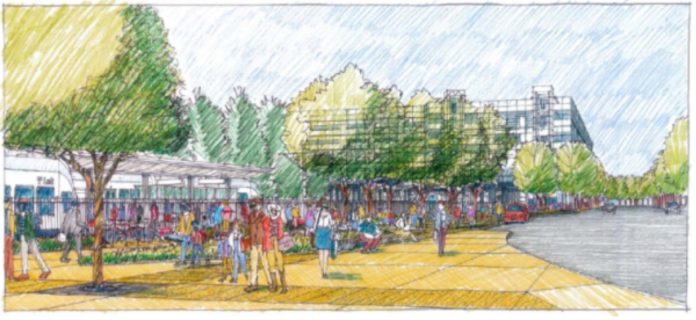Earlier this month, Sound Transit and the City of Redmond held a joint open house on station planning for two future Link light rail stations in the city. The open house provided a clearer vision for station layouts in Downtown Redmond and Southeast Redmond near Marymoor Park, both planned to open in 2024 as part of a 3.4-mile extension. The open house also sought feedback from future riders on different design approaches that could be worked into the final station designs (an online survey is still available to those who could not attend).
This all comes on the heels of planning work that began in earnest at the beginning of the year. By summer, the City of Redmond had selected a preferred approach for the Downtown Redmond extension with an at-grade station in Southeast Redmond and an elevated one in Downtown Redmond. This was different from the original concept put forth by Sound Transit, but the Sound Transit Board of Directors affirmed the general design approach.
Traversing the SR-520 Interchange
A barrier between the Southeast Redmond and Downtown Redmond stations is the SR-520 interchange and its network of on- and off-ramps. The highway also has an overpass crossing Redmond Way. The solution that Redmond and Sound Transit are proposing involves partial reconstruction of the on- and off-ramps to include tunnels for the light rail line to pass under. A new dual-use bridge would also be constructed across Bear Creek.
As an added benefit, this would allow for completion of the East Lake Sammamish Trail. Right now, there is a gap between the trail and the Redmond Central Connector that links up to the Sammamish River Trail and Puget Power Trail. Sound Transit now has a conceptual design for how all of this would work:
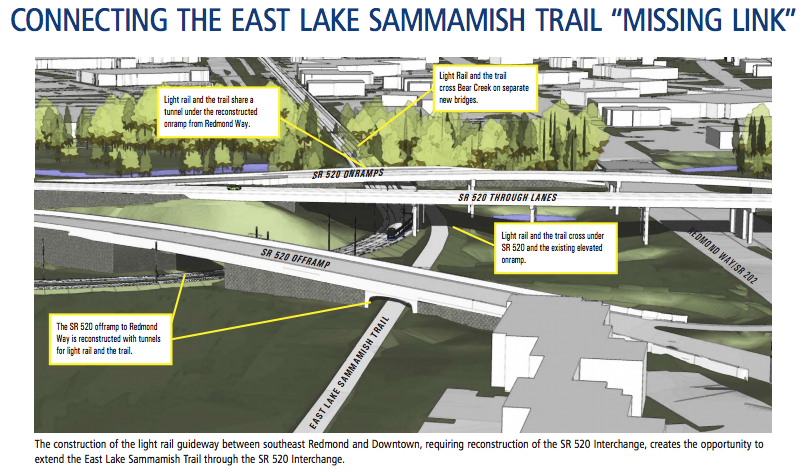
Downtown Redmond Station
The refined design for the Downtown Redmond station would include a station area straddling the blocks east and west of 166th Ave NE between Cleveland St and NE 76th St. The station would directly serve the heart of Remond’s historic and growing urban districts. The footprint of the station area now proposed is potentially smaller than a conceptual design shared earlier this summer. The elevated station would also be centered more closely to 166th Ave NE, possibly saving in construction costs and providing better access at the intersection for passengers. On the streets bordering the station area, bus bays would be provided picking up and dropping off passengers at the station.
Another notable aspect of the design update is that the conceptual location of the station could require realigning the Redmond Central Connector trail slightly to the north and result in a few modest bends instead of a straight path beneath the station and guideway. However, the proposed trail alignment would allow for space around and below the station to be put to use as a plaza, landscaping, and other support facilities.
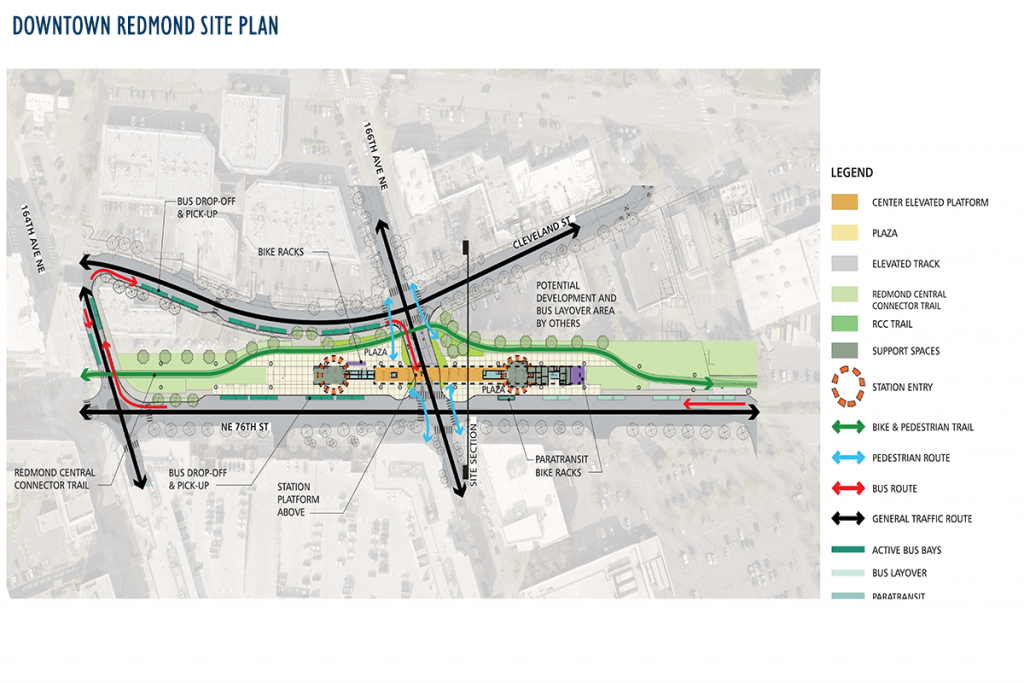
Sound Transit has an updated station profile showing the overall look and feel of the station. The design is notably less bulky and more reminiscent of the region’s other elevated stations. Still, the elevated station platform would consume a significant portion of the Redmond Central Connector right-of-way:
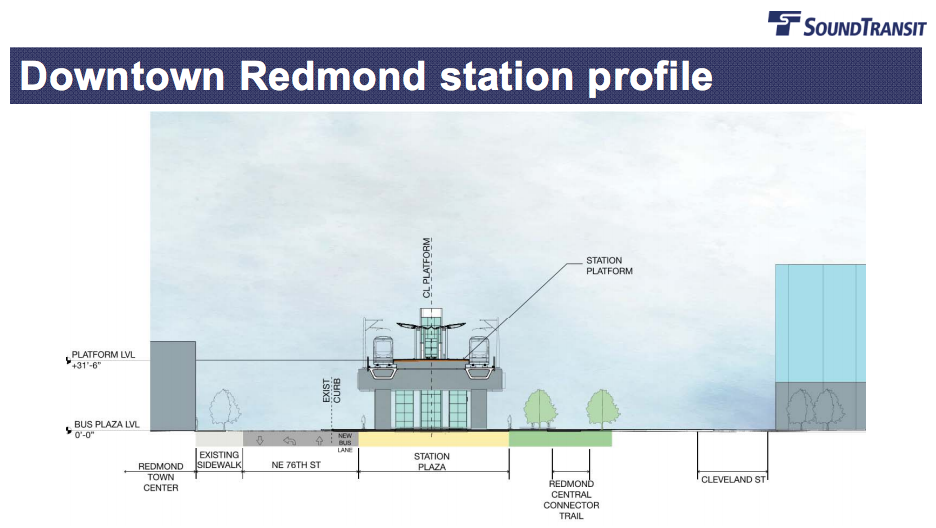
Away from the station, the viaduct could impose less on the trail, allowing more light in, and would provide opportunities for station programming and amenities:
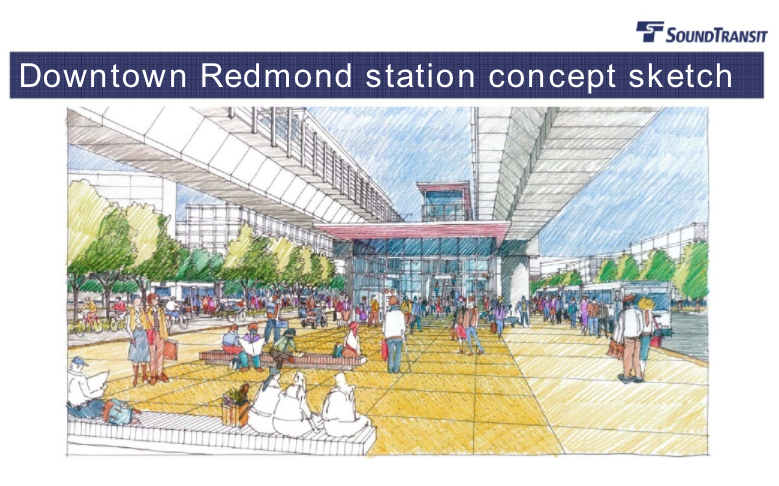
East of the station, the guideway is planned to eventually transition to at-grade as it approaches Bear Creek and the SR-520 interchange.
Southeast Redmond Station
The Southeast Redmond station is planned to be located on edge of the future urban, mixed-use Marymoor District. The station would be situated directly adjacent to SR-520, acting in some ways as a barrier to the highway. However, the station would also have some potential ridership catchment east of SR-520 by way of an extended trail. The station itself is intended to be fully at-grade.
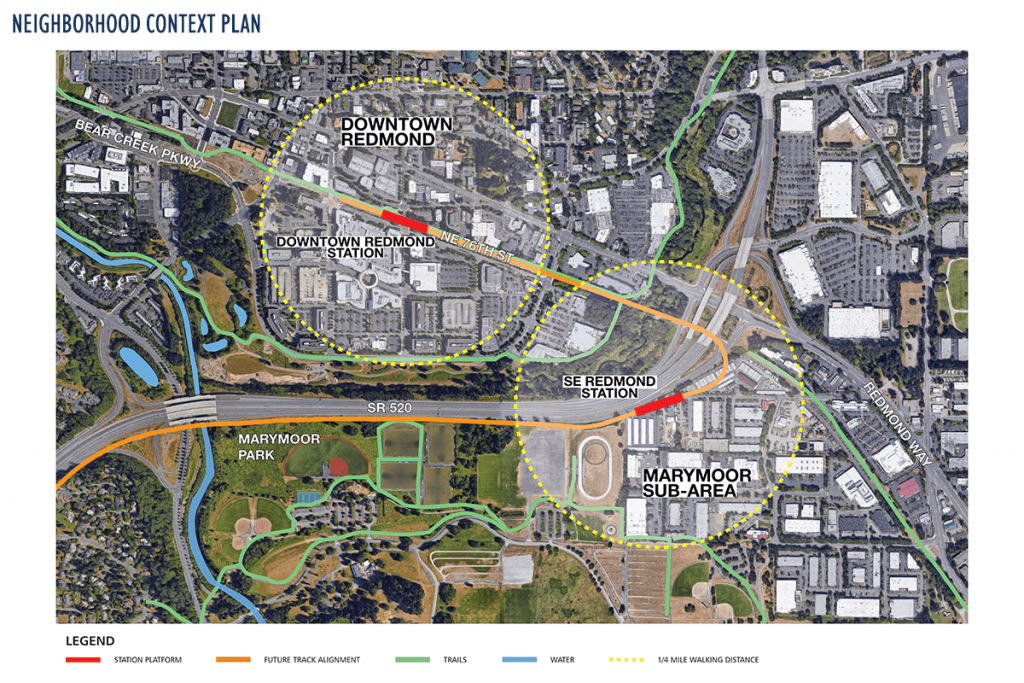
The station concept indicates that landscaping would border SR-520 in addition to the station. East of the station, a bus transfer facility would provide for direct pick-up and drop-offs of passengers and bus layover spaces. Passengers who prefer driving over walking, biking, or connecting transit will have the option of leaving their cars in one of the 1,400 parking stalls to be constructed in the station area. A parking garage constructed above the bus transfer facility would provide 1,100 of the parking stalls. Meanwhile, a surface parking lot just south of the station would likely provide another 300 parking stalls, though they could be paired with another development similar to the dual parking use of Thornton Place in Northgate. And immediately south of the station platform, Sound Transit envisions a modest plaza space.
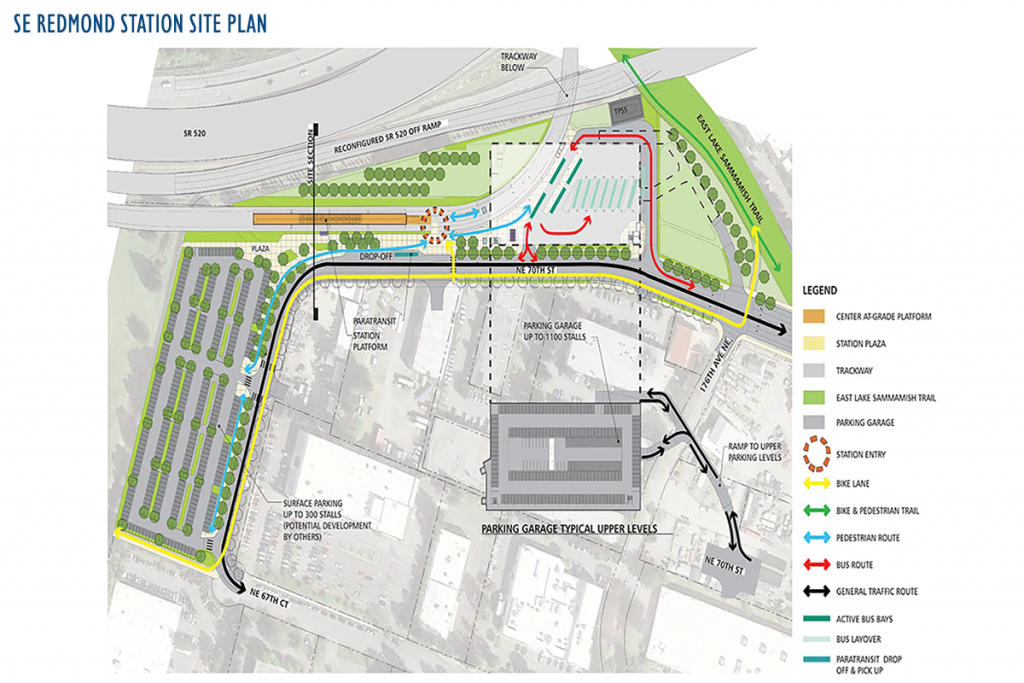
The conceptual station profile highlights just how different in scale that the station platform and parking garage could be:
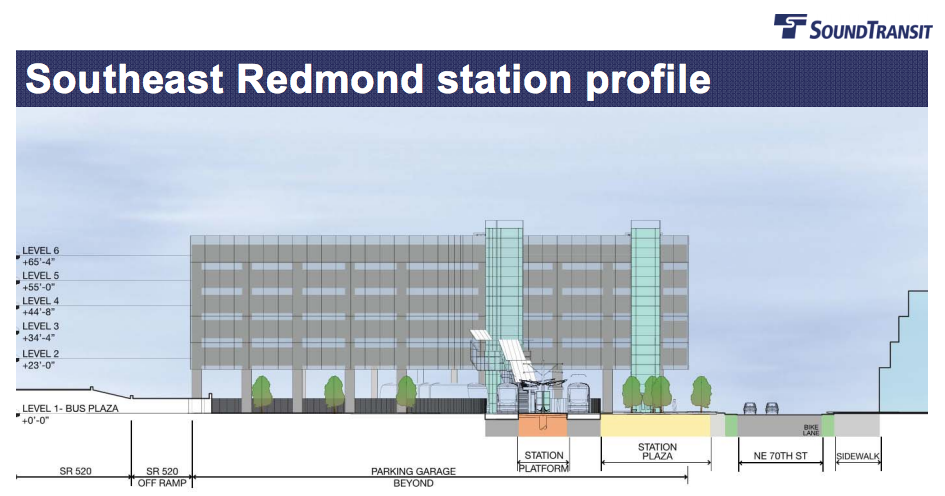
To get a better sense of what the station could look like, Sound Transit has also commissioned a sketch providing an idyllic view of the plaza space, tree-lined street, station platform, and parking garage:
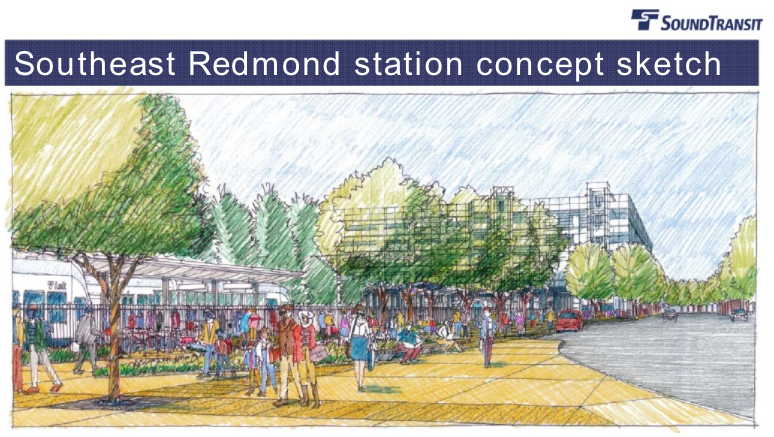
Station Design Survey
Sound Transit is soliciting public feedback on station designs through the end of today (November 30th). In addition to background profile information, the survey asks respondents to indicate some of the following:
- How they think they will travel to the stations (e.g., bus, bike, drop-off, or walking);
- How they think they will use the stations (e.g., work, shopping, airport, or visiting friends);
- How the stations should be designed (e.g., reflecting bike culture, natural environment, or Redmond’s culture and history); and
- What should be included in the station plazas and provided as amenities in the station areas (e.g., food vendors, temporary markets, games, or entertainment).
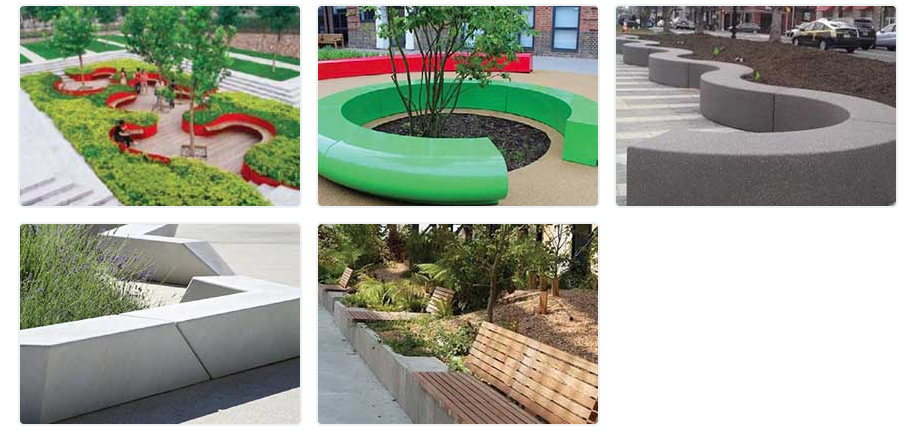
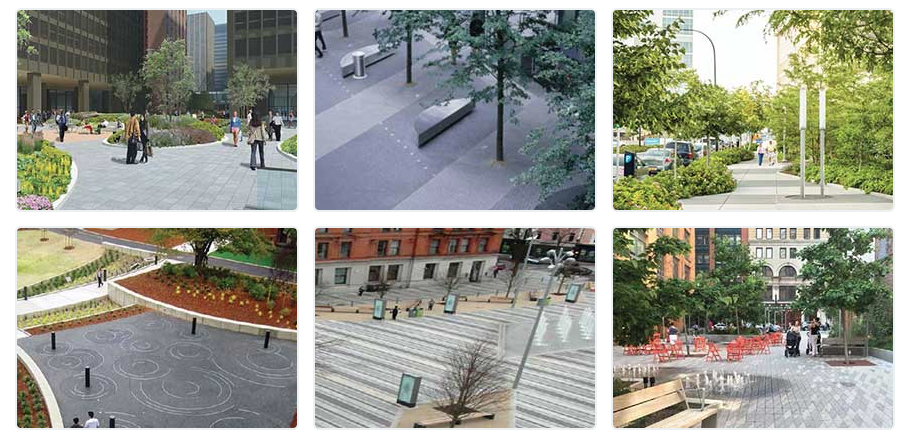
The survey also provides visual examples of landscaping, hardscaping, lighting, seating, and garage screening precedents for respondents to choose. The designs and feedback provided will be used to refine station designs in the next stage of the station planning process.
Redmond Proposes Elevated LRT Downtown to Further Trail Connection, Rezone
Stephen is a professional urban planner in Puget Sound with a passion for sustainable, livable, and diverse cities. He is especially interested in how policies, regulations, and programs can promote positive outcomes for communities. With stints in great cities like Bellingham and Cork, Stephen currently lives in Seattle. He primarily covers land use and transportation issues and has been with The Urbanist since 2014.

